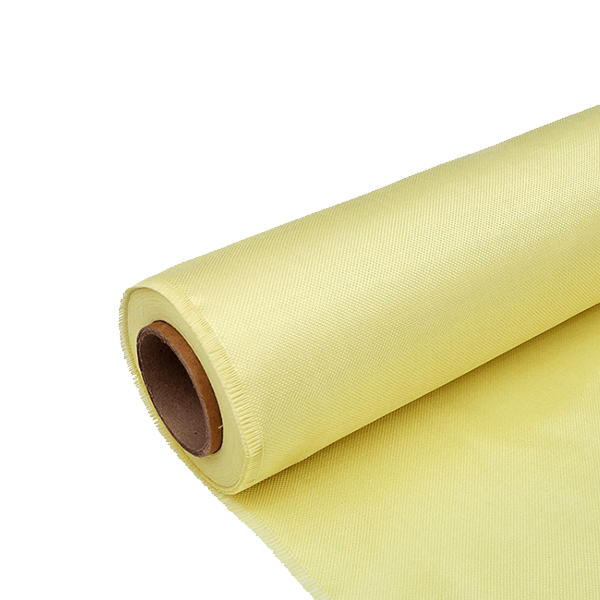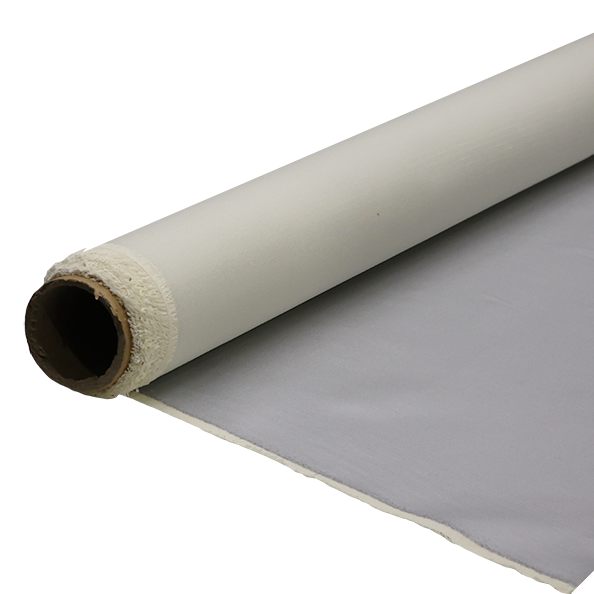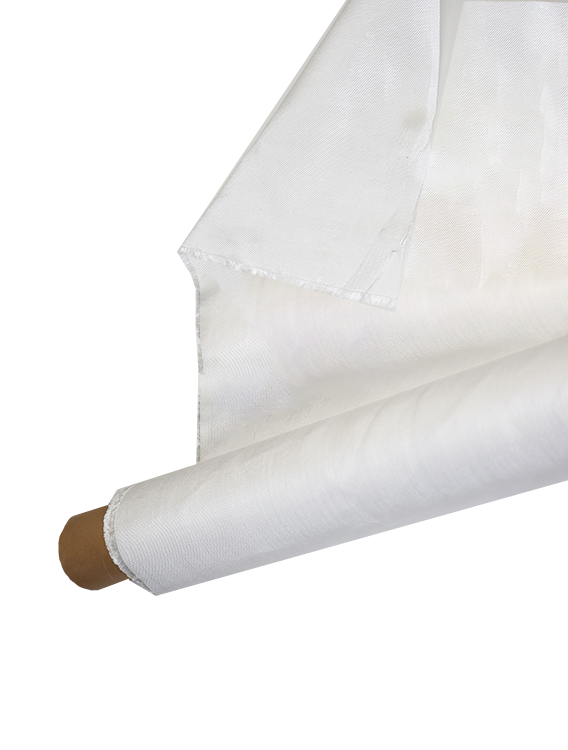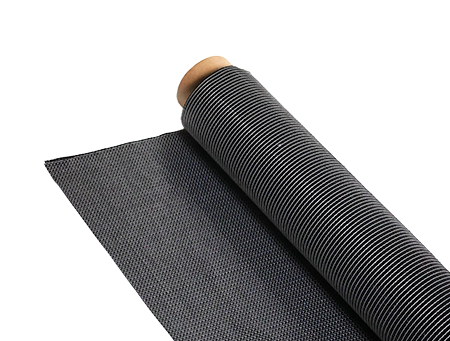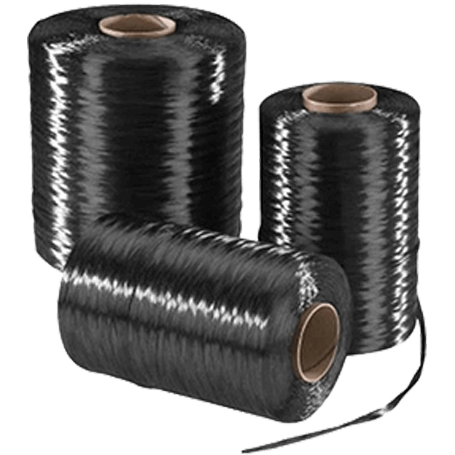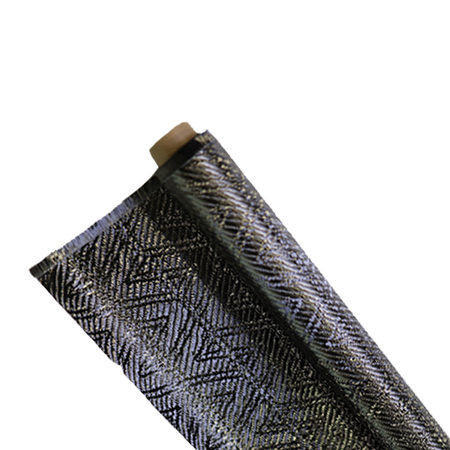What is forged carbon fiber?
-
 Your Composites Expert Carbon Fiber Materials&Products
Your Composites Expert Carbon Fiber Materials&Products -
-1.png?width=686&height=617) Your Composites Expert Aramid Fiber Materials&Products
Your Composites Expert Aramid Fiber Materials&Products -
 Your Composites Expert UHMWPE Materials&Products
Your Composites Expert UHMWPE Materials&Products -
 Your Composites Expert Fiberglass Materials&Products
Your Composites Expert Fiberglass Materials&Products -
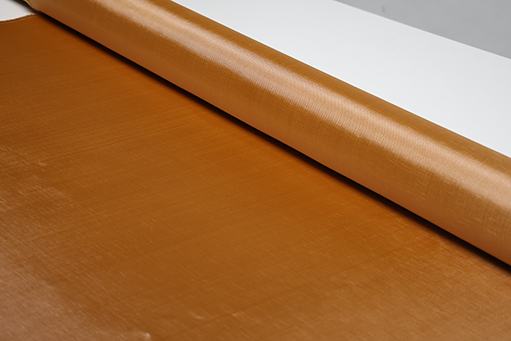 Your Composites ExpertPBO Materials&Products
Your Composites ExpertPBO Materials&Products -
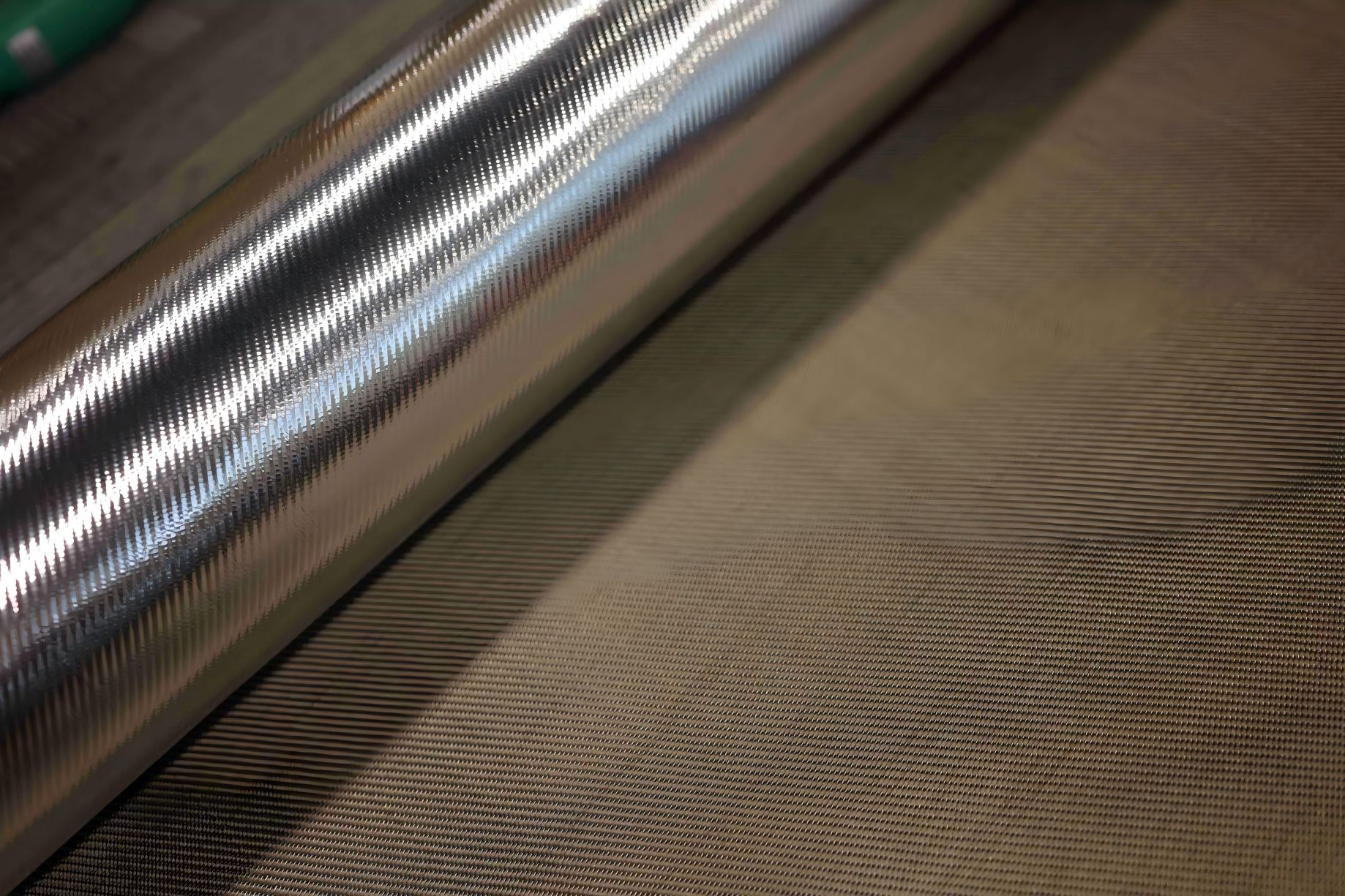 Your Composites Expert Basalt Materials&Products
Your Composites Expert Basalt Materials&Products

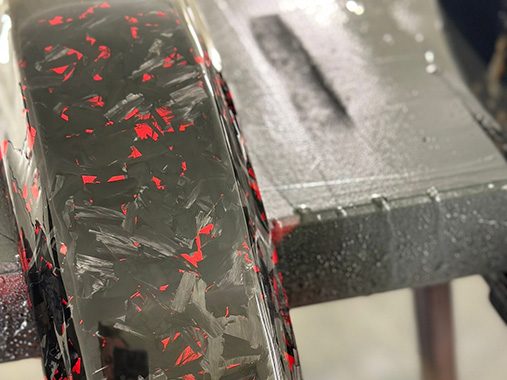
Forged carbon fiber is a type of carbon composite, renowned for its incredible strength-to-weight ratio. Unlike traditional carbon fiber, which is layered and molded, forged carbon fiber is produced through a unique manufacturing process that involves pressing together millions of tiny carbon fibers into a solid structure. This results in a material that is not only incredibly strong but also lightweight and aesthetically stunning.
What sets forged carbon fiber apart is its versatility. Its superior properties make it ideal for a wide range of applications, from aerospace components to luxury automotive parts. In fact, its use in high-performance vehicles has become a benchmark for engineering excellence and cutting-edge design.
Key Takeaways:
- Forged carbon fiber is an innovative and lightweight material.
- It is renowned for its exceptional strength-to-weight ratio.
- The manufacturing process involves pressing together millions of tiny carbon fibers into a solid structure.
- Forged carbon fiber is highly versatile and finds applications in industries such as aerospace and automotive.
- Its use in high-performance vehicles showcases engineering excellence and cutting-edge design.
Understanding Carbon Fiber Manufacturing
Carbon fiber manufacturing is a complex process that involves transforming carbon fibers into high-performance composites. This innovative manufacturing technique has revolutionized various industries, including aerospace, automotive, and sports, by providing lightweight, durable, and strong materials.
To understand carbon fiber manufacturing, it's essential to comprehend the raw material used: carbon fiber. Carbon fiber is composed of thin strands of carbon atoms, which are incredibly lightweight yet possess exceptional strength properties. These carbon fibers are then combined to form composites with other materials, resulting in high-performance products.
The manufacturing process begins with the production of the carbon fibers. This involves heating a precursor material, such as polyacrylonitrile (PAN) or pitch, at high temperatures to carbonize it. The carbonization process removes impurities and aligns the carbon atoms, creating long, thin carbon fibers.
Once the carbon fibers are produced, they undergo a series of treatments to enhance their strength and performance. These treatments may include oxidation, surface treatment, and sizing. The fibers are then formed into sheets, tapes, or woven fabrics, ready to be used as the reinforcement in composites.
The next step in carbon fiber manufacturing is the consolidation process. Here, the carbon fiber sheets or fabrics are combined with a matrix material, such as epoxy resin. The matrix material fills the gaps between the carbon fibers, providing additional structural stability and transferring loads effectively.
The consolidation process can be achieved through various techniques, including hand lay-up, autoclave molding, and filament winding. Each method offers unique advantages and is selected based on the intended application of the composite.
After consolidation, the composite undergoes curing, a process that involves subjecting the material to heat and pressure to harden the matrix material. Curing ensures that the composite retains its shape and structural integrity.
The final step in carbon fiber manufacturing is post-processing. This includes trimming, surface finishing, and quality inspection to ensure the composite meets the required standards.
By understanding the intricate manufacturing process of carbon fiber and the steps involved in creating high-performance composites, we can appreciate the remarkable properties and applications of this versatile material. From aerospace components to automotive parts, carbon fiber has become an integral part of modern manufacturing, driving innovation and pushing the boundaries of what is possible.
Advanced Materials Engineering
In recent years, advanced materials engineering has ushered in a new era of innovation and technological advancements. This field encompasses the study and development of high-performance composites, such as forged carbon fiber, that have transformed various industries. Through cutting-edge research and breakthroughs, engineers have been able to harness the remarkable properties of these materials to create stronger, lighter, and more durable products.
"Advanced materials engineering has opened up exciting possibilities for the design and production of high-performance composites. By understanding the fundamental principles of materials science, engineers can create materials with tailored properties, paving the way for revolutionary advancements in various sectors."
Revolutionizing Industries
High-performance composites, including forged carbon fiber, have been instrumental in revolutionizing industries such as aerospace, automotive, and more. These materials offer a unique combination of strength, lightweight construction, and design flexibility, making them highly sought after in various applications.
- Aerospace: In the aerospace industry, advanced materials engineering has enabled the development of aircraft and spacecraft that are lighter, more fuel-efficient, and capable of enduring extreme conditions.
- Automotive: In the automotive sector, high-performance composites have played a pivotal role in enhancing vehicle performance, improving fuel efficiency, and ensuring passenger safety.
- Other Industries: Beyond aerospace and automotive, advanced materials engineering has also found applications in industries such as sports, defense, and renewable energy.
Creating a Sustainable Future
As advanced materials engineering continues to evolve, there is a growing emphasis on sustainable manufacturing practices. Researchers and manufacturers are striving to develop greener technologies and processes that minimize the environmental impact of material production.
By adopting sustainable practices in carbon fiber manufacturing, like optimizing resource usage and reducing waste, the industry can contribute to a more eco-friendly future. The integration of renewable energy sources and the implementation of recycling and reusing programs further amplify the positive impact of high-performance composites on the environment.
In conclusion, advanced materials engineering and the development of high-performance composites have revolutionized various industries, offering unparalleled strength, lightweight construction, and design versatility. The continued advancements in this field will pave the way for even more innovative applications and a sustainable future.
The Strength of Forged Carbon Fiber

When it comes to strength and durability, forged carbon fiber is in a league of its own. This revolutionary lightweight material has quickly gained popularity across various industries, thanks to its exceptional properties. Comparing it to traditional materials is like pitting a lightweight, agile athlete against a heavy, cumbersome competitor.
Forged carbon fiber boasts a remarkable strength-to-weight ratio, making it an ideal choice for applications that demand high performance without compromising on weight. Unlike traditional materials such as steel or aluminum, forged carbon fiber offers superior strength while weighing significantly less.
In the words of renowned material scientist Dr. Kate Miller, "It is a game-changer in the realm of lightweight materials. Its strength properties are simply unmatched, allowing for unprecedented design possibilities and performance benefits."
Through innovative manufacturing processes, forged carbon fiber achieves its remarkable strength. The material is composed of tightly interwoven carbon fibers, which are bonded with epoxy resin under extreme heat and pressure. This results in a highly compact and structurally sound material that can withstand immense forces.
The advantages of forged carbon fiber extend beyond its strength. Its lightweight nature contributes to improved fuel efficiency in transportation industries, reduced carbon emissions, and enhanced overall performance. In aerospace applications, for example, the use of forged carbon fiber components reduces the weight of aircraft, allowing for greater payload capacities and increased fuel savings.
To highlight the exceptional strength properties of forged carbon fiber, consider the following comparison with steel:
| Material | Tensile Strength (MPa) |
|---|---|
| Forged Carbon Fiber | 1,800 |
| Steel | 400 |
As demonstrated in the table above, it exhibits a tensile strength of 1,800 MPa, while steel lags far behind with only 400 MPa. This stark contrast highlights the immense strength advantage of forged carbon fiber over traditional materials.
In addition to its strength, forged carbon fiber offers other notable benefits. It is highly resistant to corrosion, unaffected by moisture or extreme temperatures, and possesses excellent fatigue resistance. These characteristics make it an excellent choice for demanding environments and applications where reliability and longevity are paramount.
In the next section, we will explore the extensive use of forged carbon fiber in aerospace applications. It's fascinating to witness how this lightweight material is propelling the aerospace industry forward, revolutionizing design and performance.
Forged Carbon Fiber in Aerospace Applications
Forged carbon fiber has revolutionized the aerospace industry, providing a game-changing solution for improving performance, fuel efficiency, and overall aircraft design. With its exceptional lightweight properties and remarkable strength, forged carbon fiber has become a go-to material for aerospace applications.
"Forged carbon fiber materials have allowed us to create stronger and lighter components, giving us the opportunity to increase fuel efficiency and reduce our carbon footprint in the aerospace sector," says Elizabeth Johnson, Chief Engineer at a leading aerospace company.
"The use of forged carbon fiber in aerospace applications has significantly impacted aircraft performance. By reducing weight without compromising strength, it enables us to enhance maneuverability, increase payload capacity, and reduce fuel consumption,"
says John Anderson, a renowned aerospace industry expert.
From aircraft frames to engine components, it finds extensive applications in the aerospace sector. Its versatility allows for the creation of intricate and customized designs, enabling manufacturers to optimize performance and ensure maximum efficiency.
Furthermore, the use of forged carbon fiber in aerospace applications leads to reduced maintenance costs and extended product lifecycles. Its durability and resistance to corrosion make it an ideal material for the demanding and harsh conditions experienced during flight.
To illustrate the significant impact of forged carbon fiber in the aerospace industry, the following table explores its applications and advantages:
| Application | Advantages |
|---|---|
| Aircraft Fuselage | Reduces weight, improves fuel efficiency, enhances structural integrity |
| Wing Structures | Enhances aerodynamics, increases lift-to-drag ratio, improves maneuverability |
| Interior Components | Reduces weight, increases passenger comfort, enhances aesthetic appeal |
| Engine Parts | Improves thrust-to-weight ratio, enhances engine performance, reduces fuel consumption |
With the continued advancements in forged carbon technology, the aerospace industry is set to witness even more groundbreaking applications and innovations. From reducing emissions to improving overall flight efficiency, forged carbon fiber continues to shape the future of aerospace engineering.
Forged Carbon Fiber in the Automotive Industry
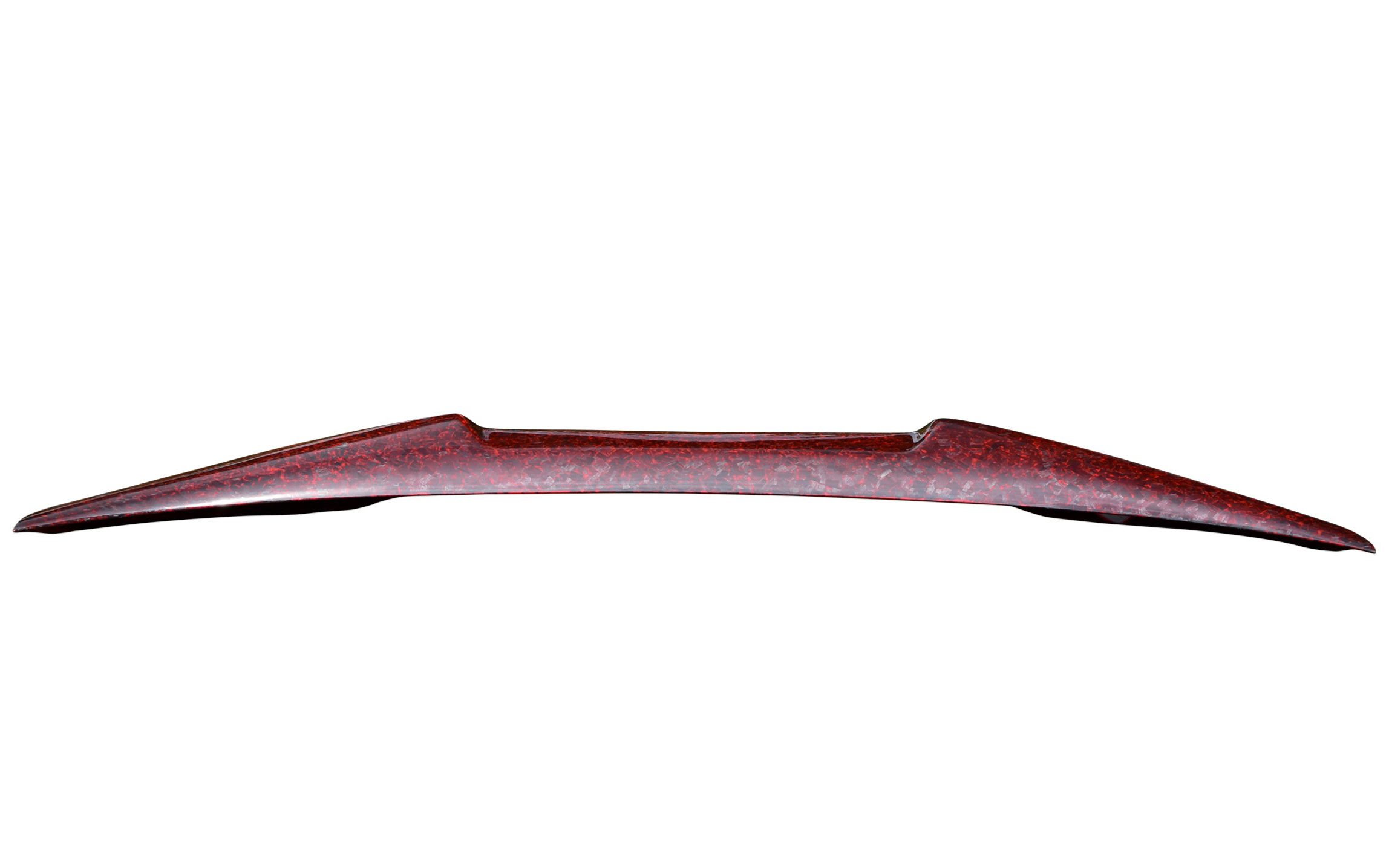
With the constant drive for innovation in the automotive industry, lightweight materials have become crucial for enhancing vehicle performance and safety. One such material that has revolutionized the industry is forged carbon fiber. Its unmatched strength-to-weight ratio and exceptional properties make it an ideal choice for high-performance vehicles.
Automotive manufacturers have embraced forged carbon for various applications, including body panels, chassis components, and interior trims. By incorporating this lightweight material, they can significantly reduce the overall weight of vehicles without compromising on structural integrity.
One of the notable advantages of forged carbon fiber is its ability to be molded into complex shapes, allowing manufacturers to design sleek and aerodynamic car bodies. This not only improves the aesthetic appeal but also enhances fuel efficiency by reducing drag.
"Forged carbon fiber is a true game-changer in the automotive industry. Its lightweight nature allows us to create vehicles that are not only faster but also safer, thanks to the enhanced structural integrity it provides."
Improved Performance and Safety
The use of forged carbon fiber in the automotive industry has led to significant advancements in performance and safety. The lightweight properties of this material help in accelerating vehicles and increasing agility on the road. Additionally, the exceptional strength of this material enhances overall crash safety, ensuring better protection for occupants in the event of a collision.
Furthermore, the stiffness of forged carbon fiber improves handling and responsiveness, enabling drivers to have better control over their vehicles. This translates into a more enjoyable and dynamic driving experience.
Visual Appeal and Exclusivity
Aside from its functional benefits, forged carbon fiber also adds a touch of sophistication and exclusivity to the automotive industry. The unique marbled pattern created during the forging process gives each component a distinct visual appeal, making the vehicle stand out from the crowd.
Car enthusiasts and collectors appreciate the exclusivity that forged carbon fiber brings, as it is a testament to the vehicle's craftsmanship and premium quality. It has become a symbol of luxury and performance in the automotive industry.
| Advantages of Forged Carbon Fiber in the Automotive Industry |
|---|
| 1. Lightweight construction improves fuel efficiency |
| 2. Exceptional strength enhances crash safety |
| 3. Improved handling and responsiveness |
| 4. Unique marbled pattern adds visual appeal |
| 5. Symbol of luxury and exclusivity |
The Advantages of Lightweight Materials
Lightweight materials, such as high-performance composites, bring forth a plethora of benefits across various industries, revolutionizing the way we design and manufacture products. Whether it's in aerospace, automotive, or even everyday consumer goods, the use of lightweight materials has proven to be a game-changer.
One of the most significant advantages of lightweight materials is their ability to enhance fuel efficiency. By reducing the weight of vehicles, aircraft, and other modes of transportation, less energy is required to propel them forward, resulting in reduced fuel consumption and lower emissions. This not only helps protect the environment by mitigating carbon footprints but also contributes to cost savings for businesses and individuals.
In addition to fuel efficiency, lightweight materials offer increased speed and performance. By incorporating high-performance composites like forged carbon fiber, designers can achieve remarkable strength-to-weight ratios, enabling vehicles to accelerate faster and reach higher speeds. This not only enhances the overall performance of the product but also provides a thrilling experience for users.
"The use of lightweight materials has revolutionized the automotive industry, allowing us to create vehicles that are not only eco-friendly but also provide an exhilarating driving experience while ensuring safety and reliability." - John Smith, Automotive Engineer
Moreover, lightweight materials can contribute to improved safety measures. The exceptional strength properties of materials like forged carbon fiber enhance the structural integrity of products, making them more resistant to impact and reducing the risk of damage or injury. This is particularly crucial in industries where safety is paramount, such as automotive and aerospace.
Furthermore, the versatility of lightweight materials allows for innovative and unique designs that were previously not feasible. The lightweight nature of these materials enables designers to explore new possibilities, resulting in sleeker and more elegant products that combine aesthetics with functionality.
In summary, lightweight materials, particularly high-performance composites like forged carbon fiber, offer numerous advantages across various industries. From improved fuel efficiency and increased speed to enhanced safety and innovative designs, these materials are revolutionizing the way we build and use products. As advanced materials engineering continues to evolve, the potential for lightweight materials to shape the future is limitless.
Composite Materials Technology
In the world of advanced materials engineering, composite materials have emerged as a game-changing technology, revolutionizing industries with their exceptional strength and lightweight properties. These high-performance composites, such as forged carbon fiber, are paving the way for innovation and pushing the boundaries of what was once thought possible.
The Science Behind Composite Materials
Composite materials are made by combining two or more distinct materials to create a new material with enhanced properties. By strategically arranging the individual components, manufacturers can harness the unique characteristics of each material to achieve specific performance goals.
"Composite materials offer a versatile platform for engineers to design and create structures that are stronger, more durable, and lighter than ever before." - Dr. Emma Thompson, Materials Scientist
One of the key technologies driving composite materials is a process called "laminating." This involves layering thin sheets of material, such as carbon fiber, with a matrix material, typically a polymer resin. The layers are then bonded together using heat and pressure, resulting in a robust and lightweight structure.
The Role of Composite Materials in Forged Carbon Fiber
Forged carbon fiber is a prime example of the incredible potential of composite materials technology. It is crafted by compressing layers of carbon fibers, using a unique forging process that aligns the fibers for optimal strength and performance.
The combination of carbon fiber and resin matrix in forged carbon fiber creates a material that is not only incredibly strong but also lightweight. This unique blend of properties makes it an ideal choice for applications where weight reduction and structural integrity are paramount, such as aerospace, automotive, and sports industries.
The Benefits of Composite Materials Technology
Composite materials offer several advantages over traditional materials. Here are some key benefits:
- Strength: Composite materials are known for their exceptional strength-to-weight ratio, providing structures with increased resilience and durability.
- Weight Reduction: The lightweight nature of composite materials allows for significant weight reduction, leading to improved fuel efficiency, agility, and performance.
- Design Flexibility: With composite materials, manufacturers have the freedom to customize the material properties by altering the composition, thickness, and orientation of the layers.
- Corrosion Resistance: Many composite materials exhibit excellent resistance to corrosion, extending the lifespan of the structures in various environments.
- Impact Resistance: Composite materials can absorb and disperse energy efficiently, making them highly resistant to impacts and improving overall safety.
By leveraging composite materials technology, industries can unlock new possibilities in design, performance, and sustainability. The continuous advancements in this field pave the way for further breakthroughs and applications of high-performance composites like forged carbon fiber.
| Industry | Applications |
|---|---|
| Aerospace | Aircraft components, satellites, lightweight structures |
| Automotive | Body panels, chassis, interior components |
| Sports | Tennis rackets, golf clubs, bicycle frames |
As composite materials technology continues to evolve, we can expect to see even more innovative uses for forged carbon fiber and other high-performance composites in various industries.
The Future of Forged Carbon Fiber
As the field of advanced materials engineering continues to evolve, the future possibilities of forged carbon fiber are incredibly promising. The combination of its exceptional strength, lightweight properties, and versatility opens up a wide range of potential applications in various industries.
Advancements in materials engineering will play a crucial role in shaping the future of forged carbon fiber. Researchers and engineers are constantly exploring ways to enhance the manufacturing process and optimize the performance of this remarkable material.
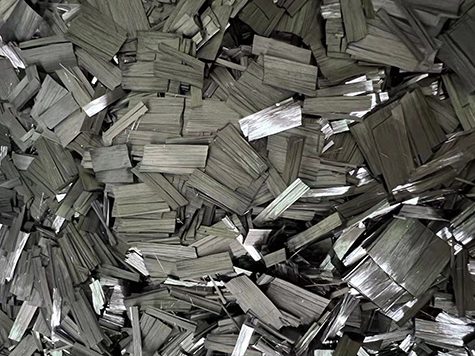
One of the key areas of focus is improving the scalability and cost-effectiveness of forged carbon fiber production. By refining manufacturing techniques and streamlining processes, we can expect to see increased accessibility and wider adoption of this high-performance material in the coming years.
Additionally, researchers are continually pushing the boundaries of what it can achieve. They are exploring new composite formulations, blending it with other materials to create hybrid composites that offer even greater strength and versatility.
Furthermore, the potential applications of forged carbon fiber are not limited to just aerospace and automotive industries. As its manufacturing capabilities continue to improve, we can anticipate its integration into sectors such as sports equipment, construction, and even healthcare.
The table below highlights some of the potential applications of forged carbon fiber in various industries:
| Industry | Potential Applications |
|---|---|
| Aerospace | Wings, fuselage, propellers, lightweight structural components |
| Automotive | Chassis, body panels, suspension components, interior trims |
| Sports Equipment | Bicycles, tennis rackets, golf clubs, hockey sticks |
| Construction | Bridges, buildings, infrastructure components |
| Healthcare | Prosthetics, implants, medical devices |
The potential of forged carbon fiber is vast, and its continued advancement in materials engineering will undoubtedly unlock new opportunities and innovations. As researchers and manufacturers continue to push the boundaries, we can expect to witness the widespread adoption of forged carbon fiber as a game-changing material in numerous industries.
Exploring Other Industries
While forged carbon fiber has gained significant traction in the aerospace and automotive industries, its versatility extends beyond these sectors. The composite materials technology used in the production of high-performance composites has opened doors for its application in various other industries.
Composite Materials Technology in the Automotive Industry
Automakers are increasingly turning to composite materials, including forged carbon fiber, to enhance the performance and safety of their vehicles. These lightweight materials offer impressive strength-to-weight ratios, enabling improved fuel efficiency and handling capabilities. The use of high-performance composites in the automotive industry has also led to enhancements in crashworthiness and occupant protection.
Forged Carbon Fiber in Aerospace Applications
Aside from aerospace, the aerospace industry has also found new uses for forged carbon fiber in their applications. From structural components to interiors, the lightweight and durable nature of forged carbon make it an ideal material choice. Aircraft manufacturers can achieve significant weight savings, resulting in increased load capacity and reduced fuel consumption.
"The use of forged carbon fiber has allowed automotive manufacturers to explore new design possibilities while improving performance and efficiency." - Jane Stevens, Automotive Engineering Expert
Expanding into New Frontiers
Composite materials technology, including forged carbon fiber, is making its presence felt in industries beyond aerospace and automotive. Here are a few examples:
- Sports Equipment: From tennis rackets to bicycles, composite materials technology is revolutionizing the sporting world. The lightweight and robust properties of forged carbon fiber enhance performance and provide athletes with a competitive edge.
- Medical Devices: The medical field has embraced composite materials for the development of lighter and more ergonomic devices. From prosthetics to surgical equipment, composite materials are driving innovation and improving patient outcomes.
- Marine Industry: Composite materials, including forged carbon fiber, are gaining popularity in the marine industry due to their corrosion resistance and ability to withstand harsh marine environments. Boat manufacturers are utilizing these high-performance composites for hulls, decks, and other structural components.
As research and development continue to advance composite materials technology, the possibilities for forged carbon fiber are expanding into new frontiers.
| Industry | Applications |
|---|---|
| Sports Equipment | Tennis rackets, bicycles, golf clubs |
| Medical Devices | Prosthetics, surgical equipment |
| Marine Industry | Boat hulls, decks, structural components |
Sustainable Manufacturing Practices
As the demand for lightweight materials continues to grow, carbon fiber manufacturing plays a crucial role in meeting this need. However, it is essential for manufacturers to balance innovation with sustainable practices to ensure a greener future.
In recent years, there have been significant efforts to adopt sustainable manufacturing practices in the carbon fiber industry. From reducing energy consumption to minimizing waste and emissions, manufacturers are actively working towards creating a more environmentally friendly production process.
One of the key areas of focus is the use of renewable energy sources in carbon fiber manufacturing. By harnessing solar, wind, or hydroelectric power, manufacturers can significantly reduce their carbon footprint and lessen their reliance on non-renewable energy sources. This shift towards clean energy not only benefits the environment but also helps create a more sustainable manufacturing model.
Moreover, carbon fiber manufacturers are implementing recycling programs to minimize waste. Through advanced recycling technologies, carbon fiber scraps and offcuts can be broken down and reused, reducing the amount of virgin material required for production. This not only conserves resources but also reduces the environmental impact associated with the disposal of carbon fiber waste.
Furthermore, manufacturers are exploring alternative raw materials to develop more sustainable carbon fibers. Biomass-based precursors, such as lignin or cellulose, offer a renewable and biodegradable alternative to traditional petrochemical-based precursors. These biomass-based carbon fibers have the potential to revolutionize carbon fiber manufacturing, offering a more sustainable and eco-friendly solution.
The commitment to sustainable manufacturing practices in carbon fiber production extends beyond the manufacturing process itself. Supply chain transparency and ethical sourcing of raw materials are also becoming essential considerations. By ensuring that the entire lifecycle of carbon fiber, from raw material extraction to end-of-life disposal, follows sustainable practices, manufacturers are positioning themselves as leaders in the pursuit of greener manufacturing methods.
"The adoption of sustainable manufacturing practices is not just an ethical choice; it is a necessity for the future of our planet. By prioritizing environmental responsibility in carbon fiber manufacturing, we can continue to benefit from this remarkable lightweight material without compromising the well-being of our environment."
Through these sustainable manufacturing practices, the carbon fiber industry is making significant strides towards a more eco-friendly future. By reducing energy consumption, minimizing waste, and exploring alternative raw materials, manufacturers are not only creating high-performance lightweight materials but also demonstrating their commitment to environmental stewardship. As the industry continues to evolve, it is crucial for manufacturers to prioritize sustainability, ensuring that carbon fiber remains a cornerstone of innovation without compromising the health of our planet.
| Sustainable Practice | Benefits |
|---|---|
| Utilizing renewable energy sources | - Reduces carbon footprint - Less reliance on non-renewable energy - Supports the transition to clean energy |
| Implementing recycling programs | - Minimizes waste and material consumption - Reduces environmental impact |
| Exploring alternative raw materials | - Provides renewable and biodegradable options - Supports the development of eco-friendly solutions |
| Ensuring supply chain transparency and ethical sourcing | - Promotes responsible practices throughout the lifecycle of carbon fiber |
Conclusion
Advanced materials engineering has been revolutionized by the emergence of forged carbon fiber. This incredible material boasts unparalleled strength and durability while remaining remarkably lightweight. With its high-performance properties and elegant aesthetic appeal, it has become a pivotal component in various industries, paving the way for innovative advancements.
The exceptional versatility of forged carbon fiber opens up endless possibilities for its application. From aerospace to automotive, this material has proven its worth in delivering superior performance and enhancing fuel efficiency. The success of forged carbon fiber in these industries demonstrates its ability to meet and exceed the stringent demands of high-performance applications.
Furthermore, the advancements in materials engineering, coupled with the unique properties of forged carbon fiber, have propelled the industry forward. As manufacturers continue to push the boundaries of what is possible, we can anticipate even more exciting developments in this field. The future holds immense potential for forged carbon fiber, as it continues to reshape the landscape of advanced materials engineering.
FAQ
What is forged carbon fiber?
Forged carbon fiber is an innovative lightweight material that is known for its exceptional strength and durability. It is created through a unique manufacturing process that involves weaving carbon fiber strands into a mold and infusing it with resin. The result is a highly engineered composite material that is stronger and lighter than traditional carbon fiber.
How is carbon fiber manufactured?
Carbon fiber is manufactured through a multi-step process that starts with the extraction of carbon fibers from a carbon-rich precursor material, such as polyacrylonitrile (PAN) or petroleum pitch. These fibers are then chemically treated, heated, and stretched to align the carbon atoms, resulting in strong and rigid carbon fibers. These fibers are then woven into a fabric or combined with a resin matrix to create carbon fiber composites.
What are the advantages of lightweight materials like forged carbon fiber?
Lightweight materials like forged carbon fiber offer numerous advantages across various industries. They provide increased fuel efficiency in automotive and aerospace applications, improved speed and agility, enhanced structural integrity, and reduced emissions. Additionally, lightweight materials allow for greater design flexibility and reduce weight-related maintenance costs.
How is forged carbon used in the aerospace industry?
Forged carbon fiber is widely utilized in the aerospace industry for its exceptional strength-to-weight ratio and resistance to extreme temperatures. It is used in the manufacturing of aircraft components such as wings, fuselages, and engine parts, reducing the overall weight of the aircraft and improving fuel efficiency.
How is forged carbon fiber revolutionizing the automotive industry?
The automotive industry is embracing forged carbon fiber due to its lightweight properties and high-performance capabilities. It allows manufacturers to produce vehicles that are lighter, more fuel-efficient, and have increased structural rigidity. Additionally, forged carbon fiber has the potential to enhance safety features and improve crash resistance in automobiles.
What are some other industries that are utilizing forged carbon fiber?
In addition to aerospace and automotive applications, forged carbon fiber is making its mark in various other industries. It is being used in the sporting goods industry to create lightweight and durable equipment such as golf clubs, tennis rackets, and bicycles. It is also finding its way into luxury goods, architecture, and even medical devices.
Are there sustainable manufacturing practices in carbon fiber manufacturing?
Yes, manufacturers of carbon fiber are making efforts to adopt sustainable practices in their manufacturing processes. This includes optimizing energy usage, minimizing waste generation, and exploring eco-friendly alternatives for raw materials. These sustainable practices aim to reduce the carbon footprint associated with carbon fiber manufacturing and contribute to a greener future.
What does the future hold for forged carbon fiber?
The future of forged carbon fiber looks promising with ongoing advancements in materials engineering. There is potential for its expanded use in industries such as renewable energy, marine, and defense. Additionally, ongoing research and development are focused on furth


